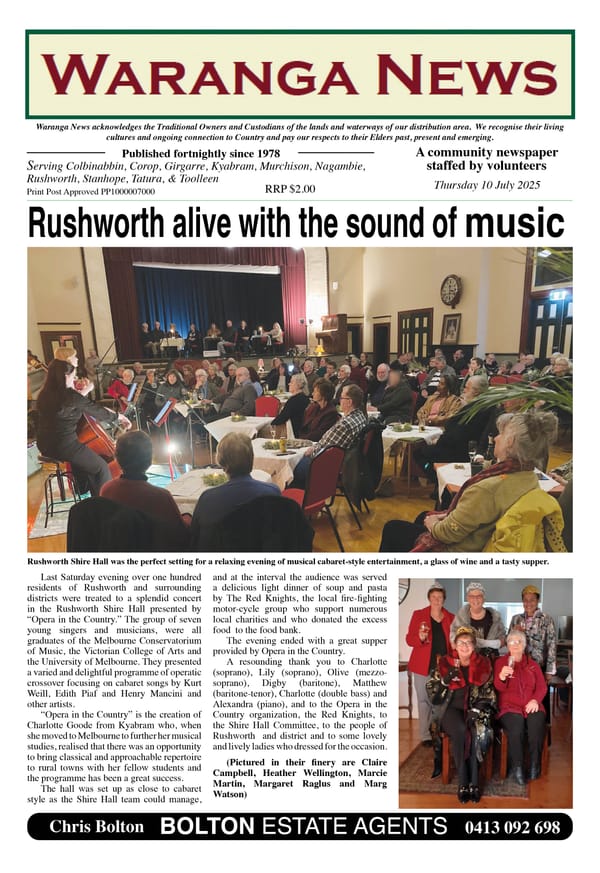17. Market gardening

One of the businesses in which the Chinese excelled in the Waranga area in the latter part of the 19th century was market gardening. Many of those who came to Australia seeking their fortune came from rural areas in south-eastern China. As a result, they already had the skills which would allow them to be successful in this pursuit.
Some of the miners would have used market gardening as an adjunct to their mining operations. If successful as miners, some would have used the proceeds from those endeavours to set themselves up in this alternative line of work.
TOWN FRINGES
From the outset, many of the Chinese miners worked in teams. Some of the team would be responsible for feeding the others, so this involved growing some of the food, procuring what they could not grow, and cooking. Adjoining the Chinese camps at Whroo, Rushworth and on other local goldfields, it is likely that there were kitchen gardens which initially mainly supplied the Chinese diaspora. The signage at the Whroo Cemetery states that Chinese market gardens existed at Moora, Rushworth and Long Gully, Whroo.
Later, some of the gardeners ran businesses on the fringe of local towns. In 1884, The Argus newspaper reported that at Murchison “the Chinese have a large and productive garden upon its (i.e. the Goulburn river’s) banks, “John” supplying all of the vegetables consumed in the town.”1 Three years later at Nagambie, a severe flood washed away the Chinese gardens along the river there. The gardeners’ huts were destroyed, and people had to be rescued from the raging torrent.2
The floods that year also affected Tatura, where the “Chinamen’s gardens”, just outside Tatura on the Rushworth Road, were flooded.3 In 1889, a visitor to Elmore noted “The first objects that attract the eye are the Chinese gardens on the banks of the river, looking splendid from the coach passing by; they are irrigated by pumps worked by horses.”4
INTO THE 20TH CENTURY
In 1902, the Rushworth Chronicle noted the death of “Ah Cheong, who has followed the occupation of market gardener at Sailor’s Gully, near Whroo, for some 40 years, (who) died suddenly on Wednesday evening. He had been ailing for some time.”5
It seems that the business of setting up market gardens by the Chinese to serve the local towns continued well into the 20th century. The Rochester Express of 1914, when reporting on a large catch of cod in the Campaspe, stated that a large fish was caught near the Chinese gardens on the banks of the river.4 Implicit in the statement was that fact that everyone knew the place where the catch had occurred, so were well aware of the Chinese gardens.
DIFFICULT WORK
The task of running a market garden in places like Rushworth and Whroo, where there was no river, was made more difficult by comparative lack of water and poor soils. Sometimes water would have to be carried a substantial distance to sustain the crops. Soil would have to be gradually improved over time, with crops needing to be protected from domesticated and native animals.
There was also a Chinese market garden at Moora which was established by the Chong family in 1850s, and operating into the 20th century. You could understand why a gardener would choose to set up there, where soil was better and there was a creek, albeit ephemeral.
SOURCES: 1 The Argus 6.9.1884 p4; 2 The Argus 5.8.1887; 3 The Argus 6.8.1887; 4 Rochester Express 20.3.1914 p3; 5 Rushworth Chronicle 30.5.02; 6 The Age 28.1.1928 p19




